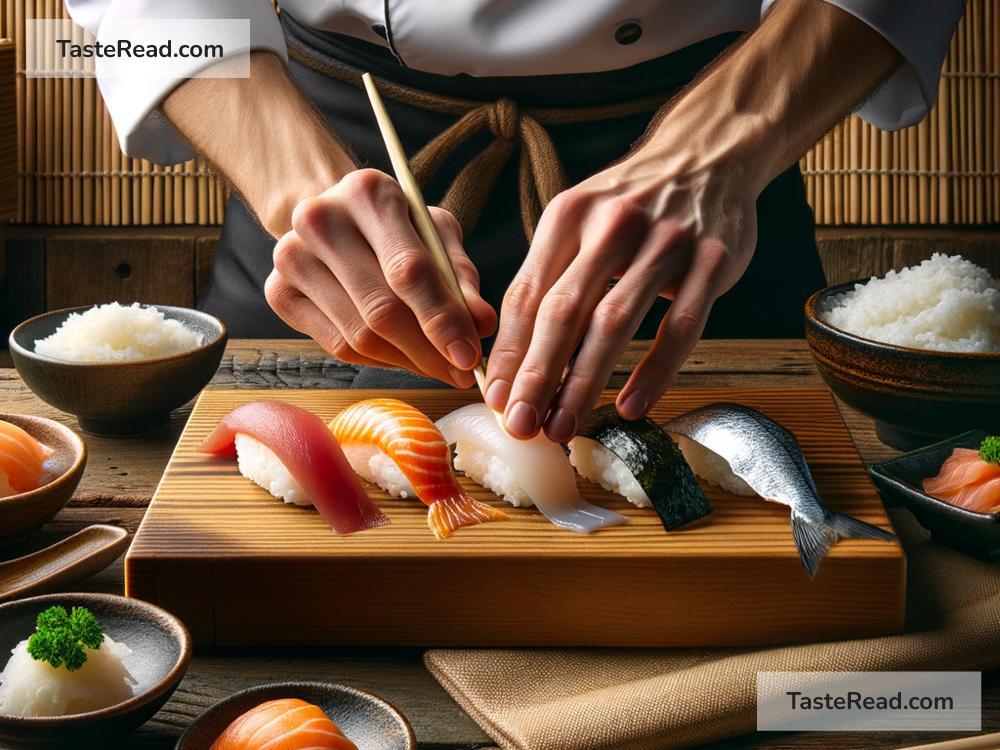Japanese sushi, a delicate combination of vinegared rice, raw fish, and an assortment of other ingredients, has become a global phenomenon, cherished by people from different corners of the world. However, the journey of sushi from a traditional Japanese dish to an international delicacy is a fascinating tale woven through centuries of history and culture. In this article, let’s embark on a journey to explore the rich history behind Japanese sushi.
Sushi’s origins can be traced back to Southeast Asia in a form known as “narezushi.” It wasn’t exactly the sushi we know and love today. Narezushi was essentially fish preserved in fermented rice. The primary purpose was to keep the fish edible for longer periods. People would discard the rice and only eat the fish when it was time to consume it. This method eventually made its way to Japan around the 8th century.
As narezushi found its home within Japan, the Japanese began to add their unique touches to it. By the Muromachi period (1336–1573), the practice of eating the rice along with the fish started to take root. This change significantly altered the taste and preparation method of the dish, making it more similar to what we recognize as sushi today. The fermentation process was sped up, and vinegar was added to the rice to enhance its flavor and preservation qualities. This version was called “han-narezushi.”
The real transformation, however, came about in the Edo period (1603–1868), where today’s popular form of sushi, “Edomae-zushi” or Edo-style sushi, originated. As Tokyo (formerly Edo) began to flourish, fast food stalls became incredibly popular among the bustling population. Sushi vendors started serving “nigiri sushi” — hand-pressed rice topped with a slice of fresh fish, a style attributed to a chef named Hanaya Yohei in the 1820s. This sushi was a hit due to its quick preparation and ease of consumption, qualities that matched the fast-paced life of Edo’s inhabitants.
Edomae-zushi marked a significant departure from the traditional fermented forms of sushi. The emphasis shifted to fresh fish, reflecting the rich variety available in Tokyo Bay. This era also saw the introduction of soy sauce as a common condiment for sushi, adding another layer to its flavor profile.
The Meiji Restoration in 1868 and subsequent changes in Japanese society further spread sushi across the country. With the modernization of transportation, particularly the introduction of refrigeration and the expansion of the railway network, fresh fish could be transported more quickly across Japan. This helped sushi to break out of its regional confines and become a national dish.
The post-World War II period saw significant Japanese emigration, particularly to the Pacific countries. Japanese immigrants brought their cuisine with them, opening restaurants that catered to local tastes while staying true to traditional recipes. However, it wasn’t until the late 20th century that sushi started to gain significant popularity in the West. A key factor in its global spread was the invention of the California roll in the 1970s by a Japanese chef in Los Angeles, which adapted traditional sushi to suit American palates by using avocado instead of toro (fatty tuna belly) and rolling the sushi inside-out.
Today, sushi is enjoyed worldwide, with variations and innovations adding to the rich tapestry of its history. From supermarket shelves to high-end restaurants, sushi has firmly established itself as a favorite across the globe. However, traditional sushi restaurants, known as “sushi-ya”, still hold a special place in Japanese culture, offering an experience that is as much about art and tradition as it is about food.
Understanding the history of sushi provides us with a greater appreciation of this culinary masterpiece. It’s a reminder of Japan’s remarkable ability to blend tradition and innovation, creating something beautiful that transcends cultural boundaries. Sushi is not just a dish; it’s a cultural ambassador, telling a story of centuries of evolution and the seamless merging of simplicity and complexity.
As we relish each bite of sushi, let’s remember the long journey it has traveled — from a basic method of preserving fish to a sophisticated and beloved cuisine that captures the elegance and diversity of Japanese culture. Sushi is a testament to the ingenuity of human culinary practices, and its history is a rich narrative of adaptation, refinement, and global spread.


